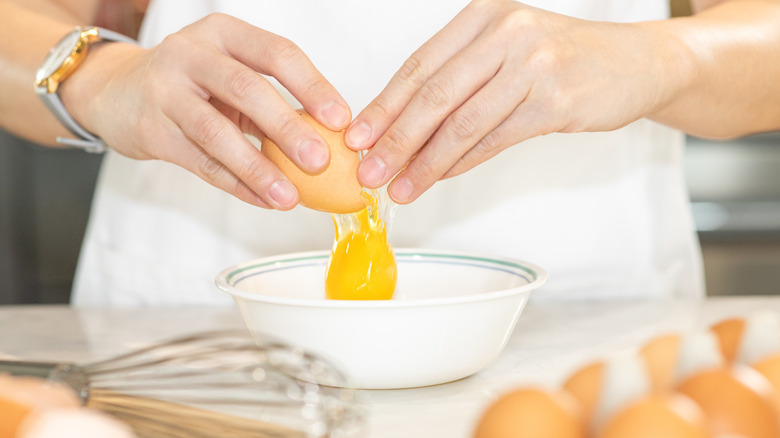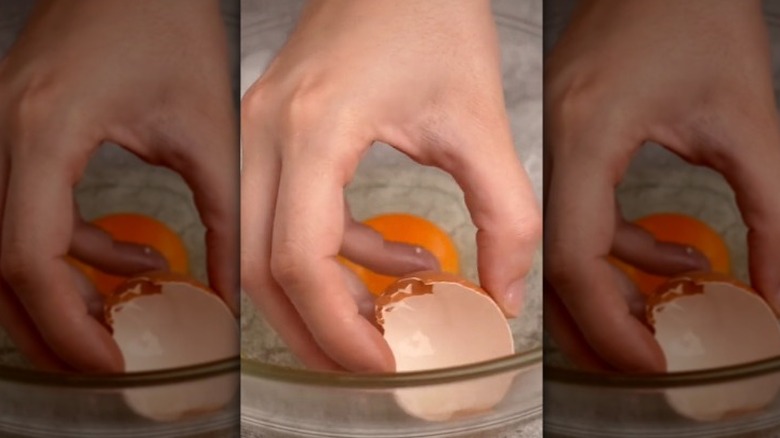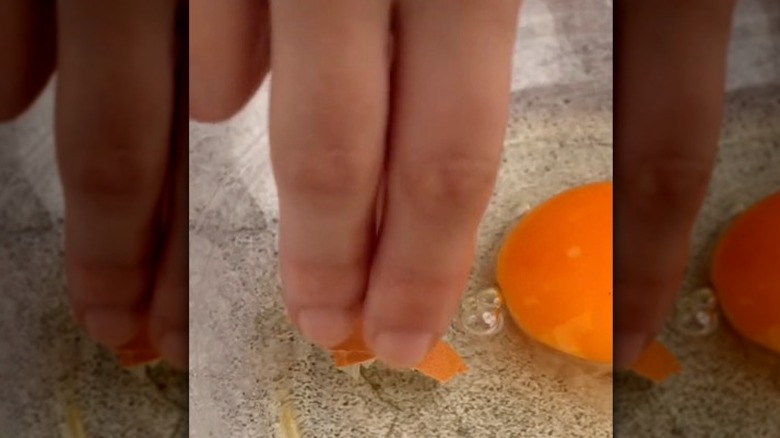How To Remove Eggshell Pieces From Cracked Eggs
You can't make an omelet without cracking some eggs, and whether you prefer cracking them on the lip of the bowl, the countertop, or using another egg, you also can't crack an egg without running the risk of bits of shell ending up in the bowl. And we probably don't have to tell you that when eggshells break, they tend not to break cleanly. And removing cracked eggshell pieces from a separate bowl is much easier than doing so from a bowl that contains, say, ground beef if you're making meatballs; or butter and sugar if you're baking cookies. It's also considerably safer than doing so from a hot griddle, as you might when frying or scrambling eggs, or boiling water, as you might when poaching them.
Even in a separate bowl, however, the slippery texture of egg whites can make removing eggshell pieces a challenge. That's where the following hacks for removing eggshell pieces from a bowl come in handy.
The eggshell trick for removing eggshell pieces from the bowl
Assuming you have at least one half-shell intact, the eggshell itself should be the first tool you reach for when removing errant pieces from the bowl. This is because the sharp, jagged edges are able to cut through the slick and viscous white of the egg — where the pieces of broken eggshell tend to gravitate. Moreover, eggshell pieces are naturally curved, and that concave, spoon-like shape is actually helpful in attracting the eggshell slivers.
Simply take a piece of broken eggshell — one big enough so that you can pinch it between your thumb and forefinger and one that doesn't appear to have its own broken bits that might fall into the bowl. Use it to dig into the spot where the unwanted shell landed. The broken bit should adhere easily to your makeshift eggshell scooper for easy removal.
What if you already threw your eggshells in the trash?
If you already trashed all your eggshell halves, you can always use a spoon, but we have another solution that doesn't even involve dirtying a dish. Simply wet your thumb and forefingers, and use them to retrieve the broken eggshell piece or pieces from the bowl. Egg white repels water, so cleaning your fingers removes the slippery proteins it contains, making it easier to grasp the shell pieces. Without the water coating your fingers, the slippery egg white will get between your skin and the eggshell shard you're trying to make contact with, making it an interminable affair. The coating of water allows you to make contact with the broken bit, and it will cling to your finger for easy removal.
To ensure you need to employ this tip as infrequently as possible, nail your cracking technique to avoid this situation in the first place!


